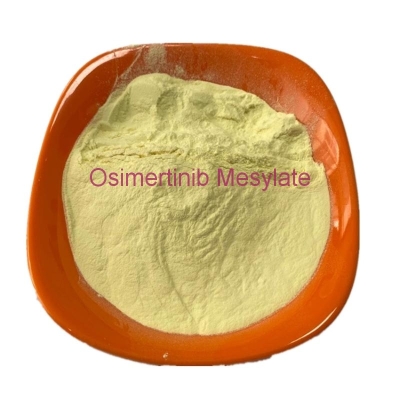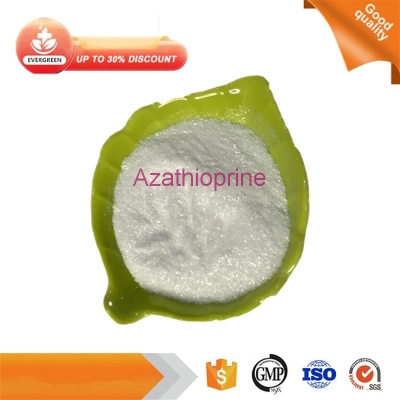-
Categories
-
Pharmaceutical Intermediates
-
Active Pharmaceutical Ingredients
-
Food Additives
- Industrial Coatings
- Agrochemicals
- Dyes and Pigments
- Surfactant
- Flavors and Fragrances
- Chemical Reagents
- Catalyst and Auxiliary
- Natural Products
- Inorganic Chemistry
-
Organic Chemistry
-
Biochemical Engineering
- Analytical Chemistry
- Cosmetic Ingredient
-
Pharmaceutical Intermediates
Promotion
ECHEMI Mall
Wholesale
Weekly Price
Exhibition
News
-
Trade Service
In the past half century, the medical treatment of cancer is also diverse, with the development of medical technology, new drug development and medical detection methods iteration, the survival time of cancer patients is constantly improving, in the direction of chronic diseases, anti-cancer means are also increasing
.
caused by radiotherapy and methotrexate in mice.
Compared with the model control group, Rh2 can increaseCD4+ T cells and CD8+ in spleen and thymic lymphocytes the number of T cells (P<0.
05 or P<0.
01), increases the number of natural killer cells (NK) in the spleen, Increases the expression of T cell receptors (TCRs) (P<0.
05 or P<0.
01), reduces the number of medullary-derived suppressor cells (MDSCs) in the spleen (P<0.
05 or P<0.
01), increases the expression of MHCII, a co-stimulatory molecule on the surface of dendritic cells (DCs) (P<0.
05), reduces the expression of PD-L1 (P<0.
05), and promotes the secretion of Th1-type cytokines interleukin 2 (IL-2) and tumor necrosis factor α (TNF-α) in serum (P<0.
05 or P<0.
01) <b20>。 [3]
.
[4] Although the medicinal efficacy of ginsenoside Rh2 monomer is comprehensive and is expected to become an effective tumor treatment monomer, its content in ginseng is only one part per 100,000, which seriously limits the application of
ginsenoside Rh2.
At present, China has broken through the key technology of ginsenoside Rh2 extraction, and ginsenoside Rh2 unilateral health care products have been marketed, with a content of more than 16.
2%, which provides a new strategy and direction
for the treatment of tumors.
References:
.
Anti-cancer "new star" landed on CCTV
In 2017, CCTV's "Journey of Discovery - Record the East" column special report "The gift of the king of hundred herbs", telling that ginseng as the king of hundred herbs, comprehensive efficacy, wide application, in anti-cancer is also a unique side, experts especially pointed out that ginsenoside Rh2 is a monomer
with the highest anti-cancer activity in ginseng.
Ginsenoside Rh2 – a high efficiency and low side effect anti-cancer nova
Ginsenoside Rh2 is a highly active rare saponin monomer extracted from ginseng, which has good anticancer activity
.
Cell experiments have shown that ginsenoside Rh2 can inhibit the proliferation of cancer cells, induce apoptosis of cancer cells, reverse cancer cell drug resistance, and enhance the killing effect
of chemotherapy drugs on cancer cells.
This shows that ginsenoside Rh2 is expected to reduce the side effects of radiotherapy and chemotherapy, improve patients' autoimmunity and disease resistance, and is expected to become an efficient and non-toxic new anti-cancer ingredient for clinical
use.
[1]
Ginsenoside Rh2 is a highly active rare saponin monomer extracted from ginseng, and cell experiments have shown that it has good anticancer activity
.
Ginsenoside-Rh2 can induce apoptosis in a variety of tumor cells, including human leukemia cells, human cervical cancer cells, human ovarian cancer cells, human lung cancer cells, human liver cancer cells and human breast cancer cells, and ginsenoside Rh2 can simultaneously initiate the mitochondrial pathway and membrane death receptor pathway to efficiently kill cancer cells
.
Ginsenoside Rh2 can also inhibit the growth
of tumor cells by inhibiting the G1 phase arrest of tumor cell cycle by inhibiting the JNK, Akt, MAPK and β-catenin signaling pathways.
In breast cancer cells, ginsenoside-Rh2 can inhibit microRNA-mediated multiplex drug resistance
.
In human multiforme malignant glioma cells, ginsenoside Rh2 inhibits the GFR/PI3k/Akt/mTor signaling pathway by downregulating vascular endothelial growth factor A, reducing the invasion and metastasis ability
of tumor cells.
Animal-level studies have shown that ginsenoside-RH2 similarly inhibits the growth
of a variety of implant tumors in mice.
[2]
caused by radiotherapy and methotrexate in mice.
Compared with the model control group, Rh2 can increaseCD4+ T cells and CD8+ in spleen and thymic lymphocytes the number of T cells (P<0.
05 or P<0.
01), increases the number of natural killer cells (NK) in the spleen, Increases the expression of T cell receptors (TCRs) (P<0.
05 or P<0.
01), reduces the number of medullary-derived suppressor cells (MDSCs) in the spleen (P<0.
05 or P<0.
01), increases the expression of MHCII, a co-stimulatory molecule on the surface of dendritic cells (DCs) (P<0.
05), reduces the expression of PD-L1 (P<0.
05), and promotes the secretion of Th1-type cytokines interleukin 2 (IL-2) and tumor necrosis factor α (TNF-α) in serum (P<0.
05 or P<0.
01) <b20>。 [3]
Ginsenoside Rh2 can alleviate the immunodeficiency caused by radiotherapy and immunosuppressants in mice, promote the differentiation and maturation of natural immune cells and the proliferation of immune effector cells, increase the secretion level of Th1 cytokines, and enhance the immune function
of mice.
[3]
Based on the above results, we put forward the following hypothesis: compared with other anti-tumor monomers, ginsenoside Rh2 is expected to inhibit tumor cell proliferation, invasion, induce apoptosis, cycle arrest and improve adverse reactions of chemotherapy, with fewer toxic side effects, which also makes it a very ideal anti-tumor drug
.
In addition, in addition to its own good anti-tumor activity, ginsenoside Rh2 monomer can also enhance the
body's immunity.
[3]
.
[4] Although the medicinal efficacy of ginsenoside Rh2 monomer is comprehensive and is expected to become an effective tumor treatment monomer, its content in ginseng is only one part per 100,000, which seriously limits the application of
ginsenoside Rh2.
At present, China has broken through the key technology of ginsenoside Rh2 extraction, and ginsenoside Rh2 unilateral health care products have been marketed, with a content of more than 16.
2%, which provides a new strategy and direction
for the treatment of tumors.
References:
[1] Si Jiangong, Tian Changen; Research progress on the antitumor mechanism of ginsenoside Rh2
[2] Yushi Wang, Human target identification of ginsenoside Rh2 and anti-tumor molecular mechanism
[3] Qian Ying, Huang Rongrong, Sun Rui, Jue Ping, Li Lin, Xie Rui, Hu Qinyu, Xiang Ming; Immunomodulatory effect of ginsenoside Rh2 on immunocompromised mice
[4] Xu Wen, Cao Hui, Yang Yuanrong; Research progress on pharmacological activity of ginsenoside Rh2







